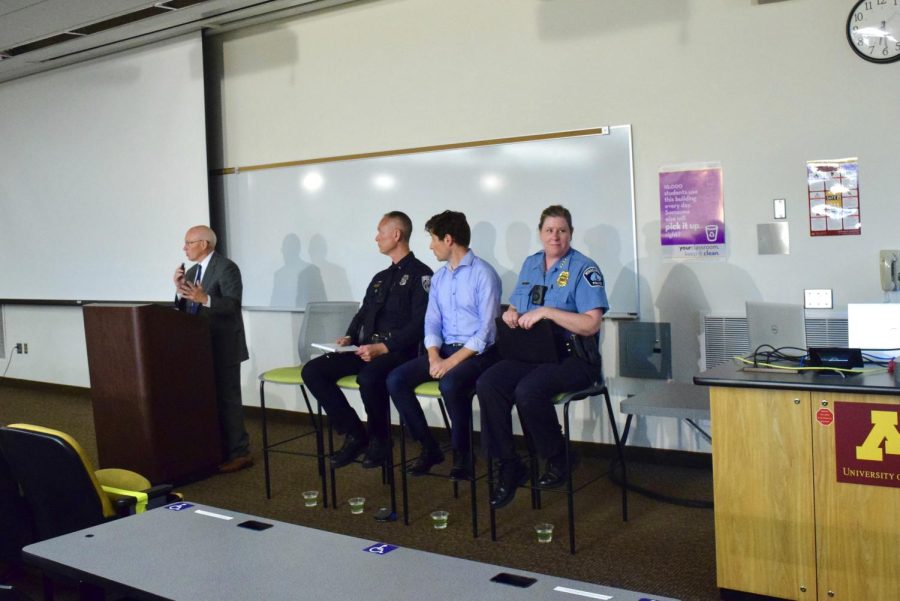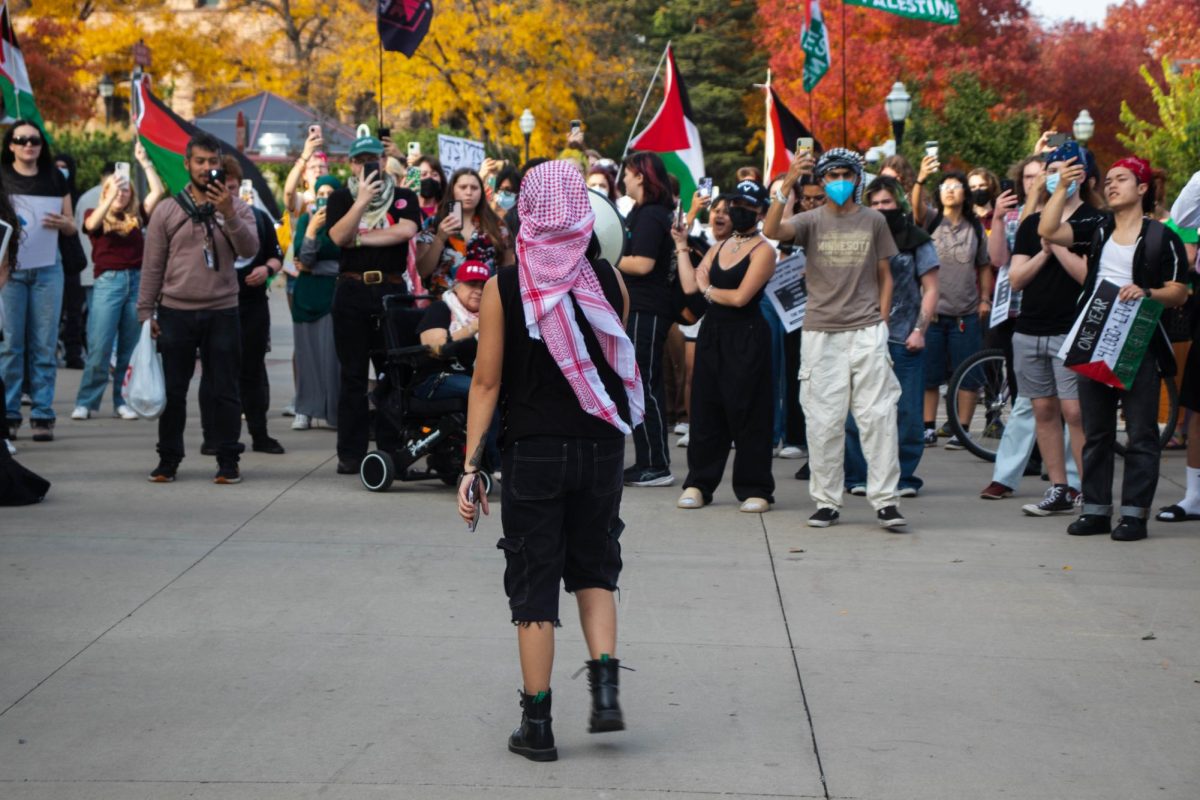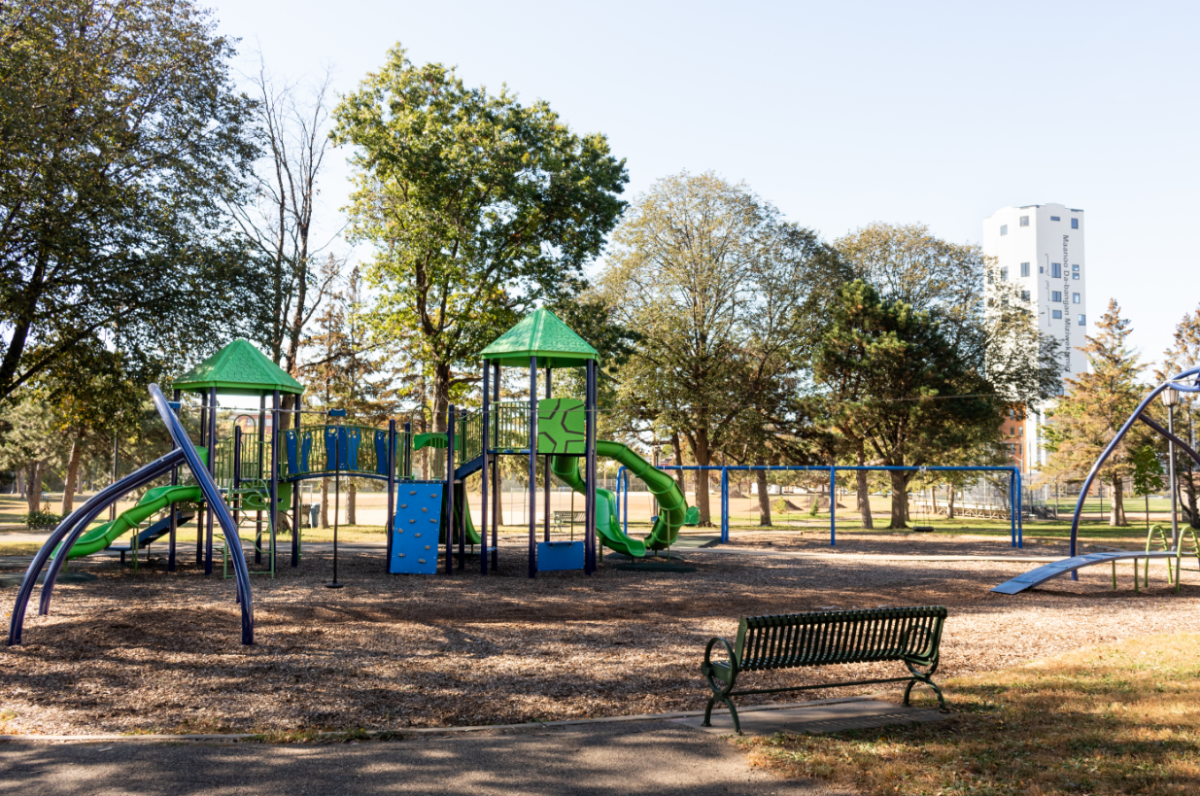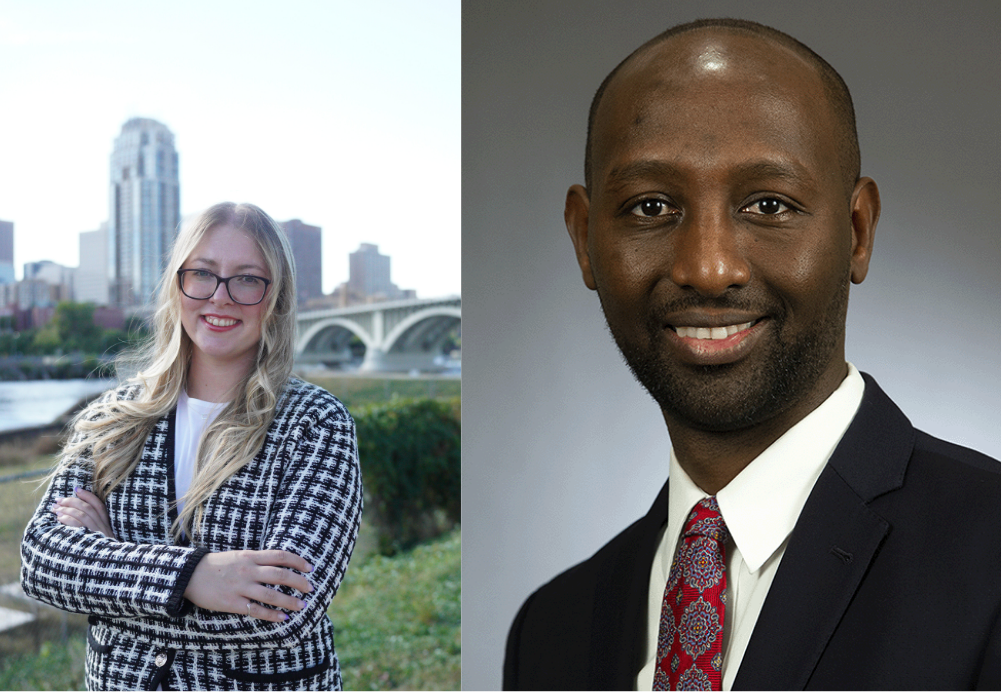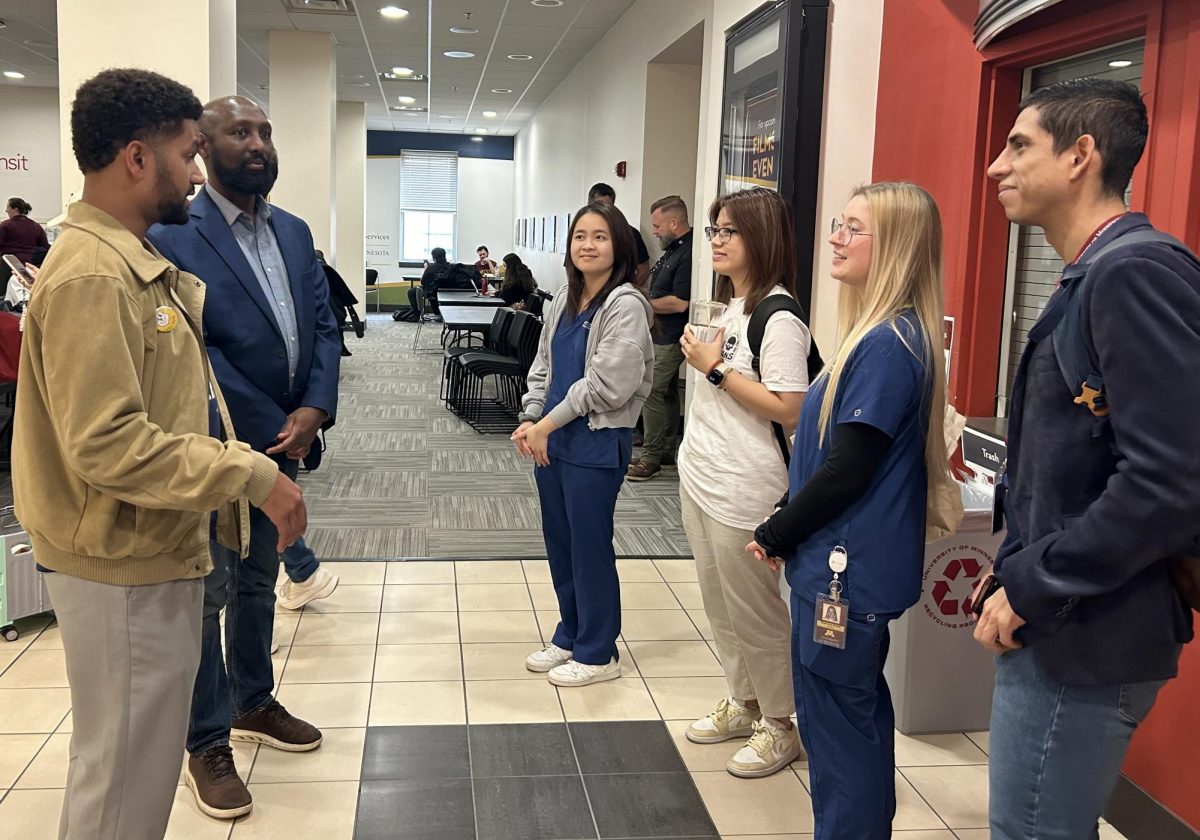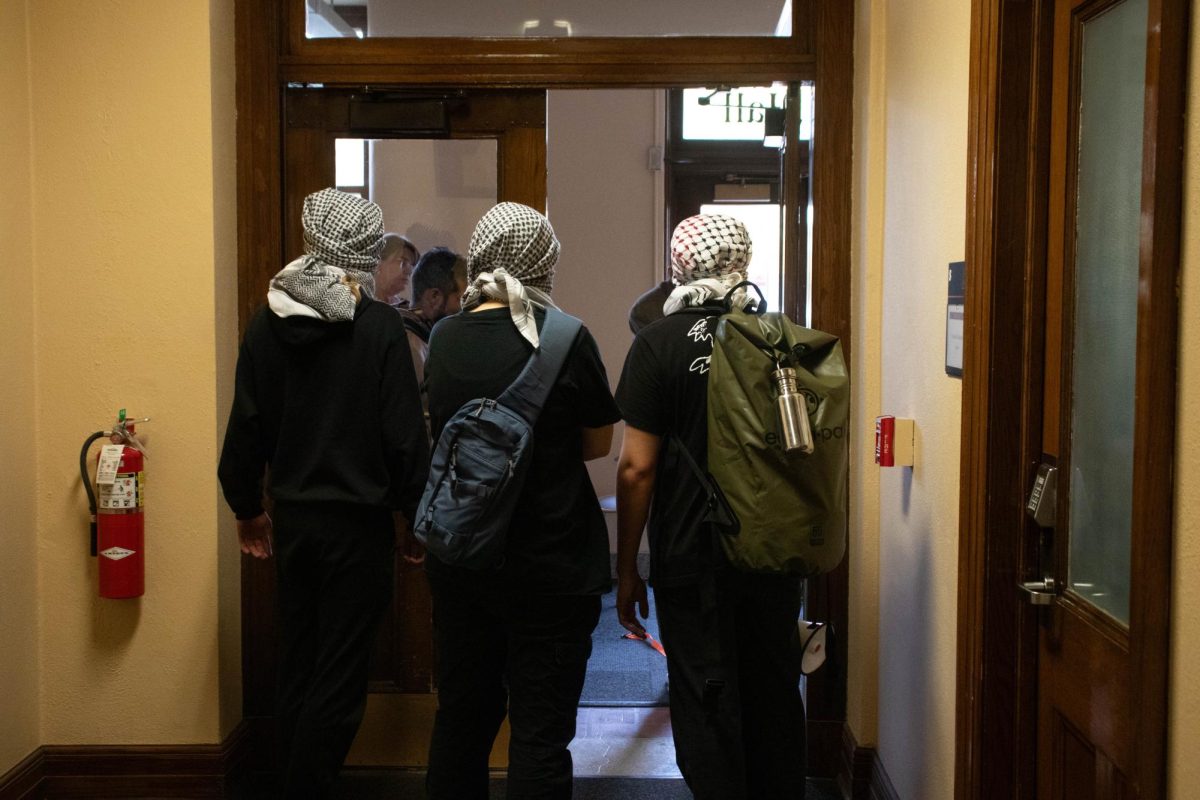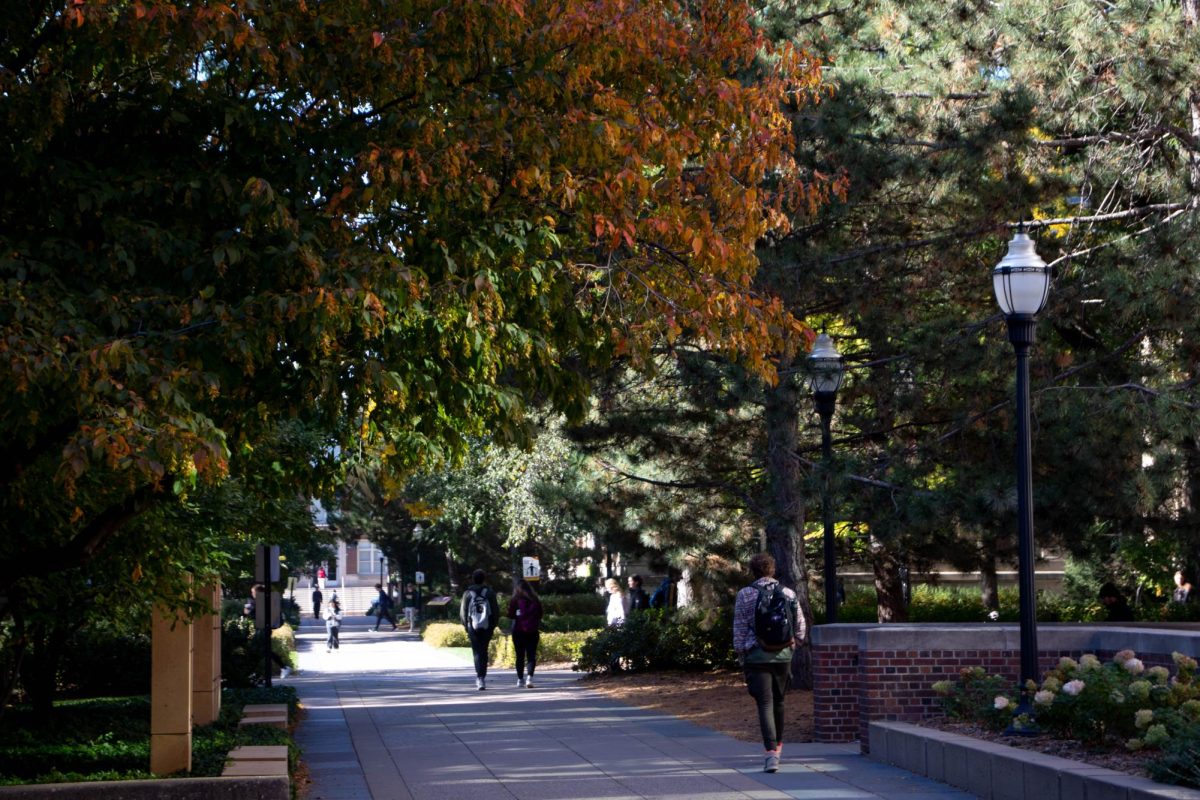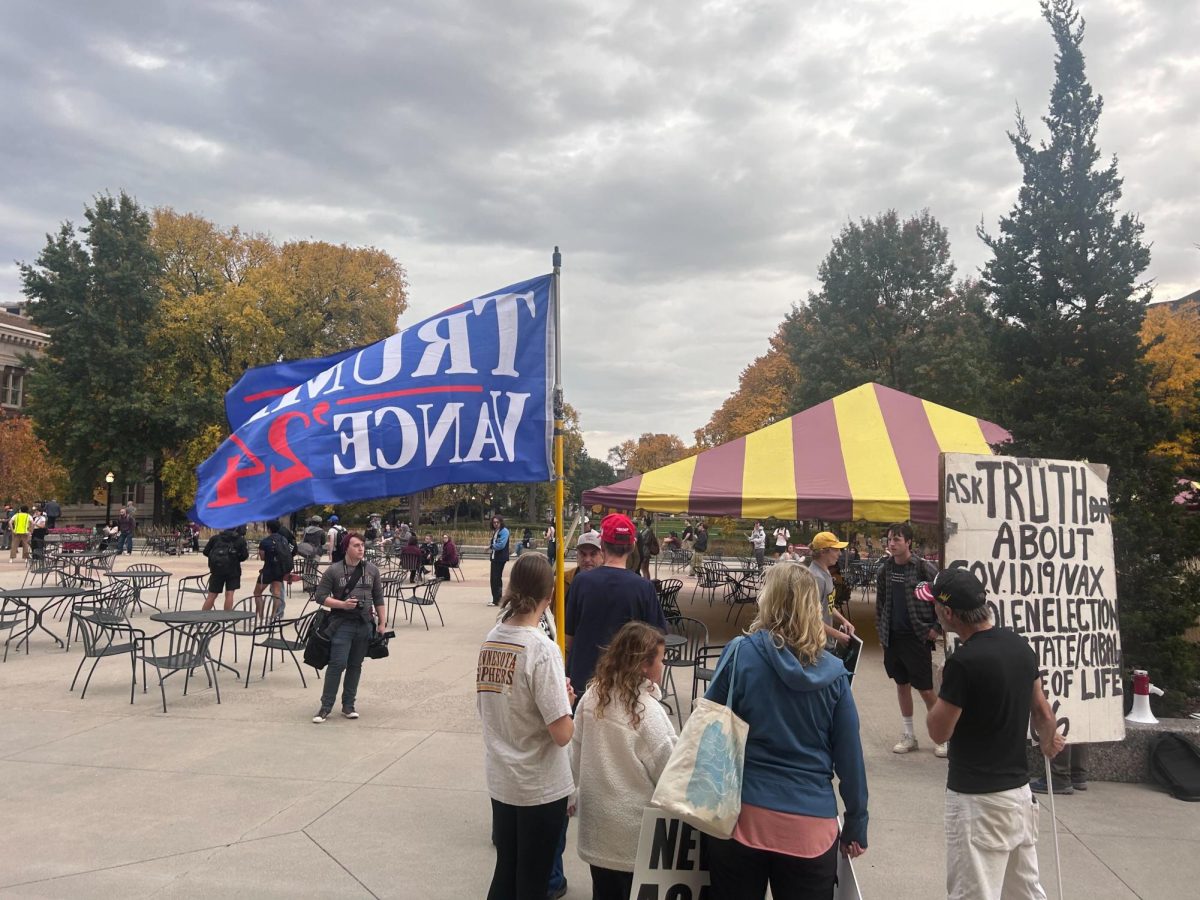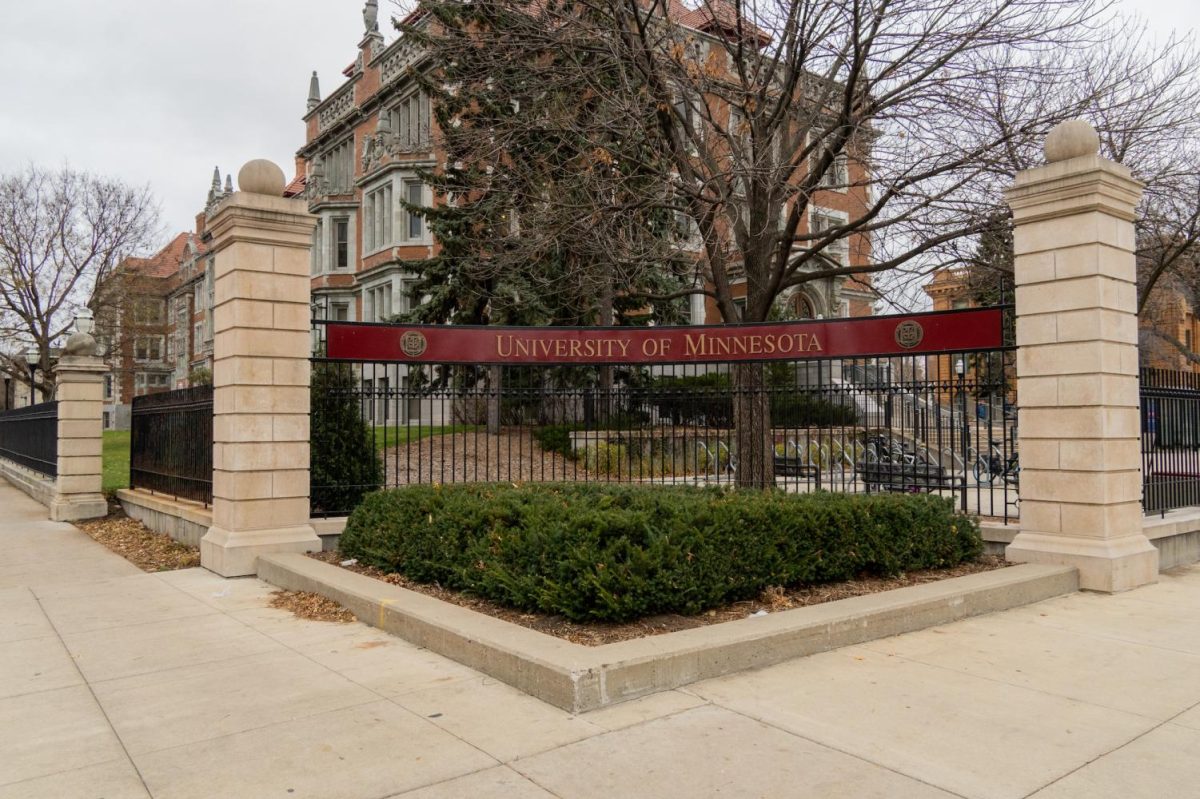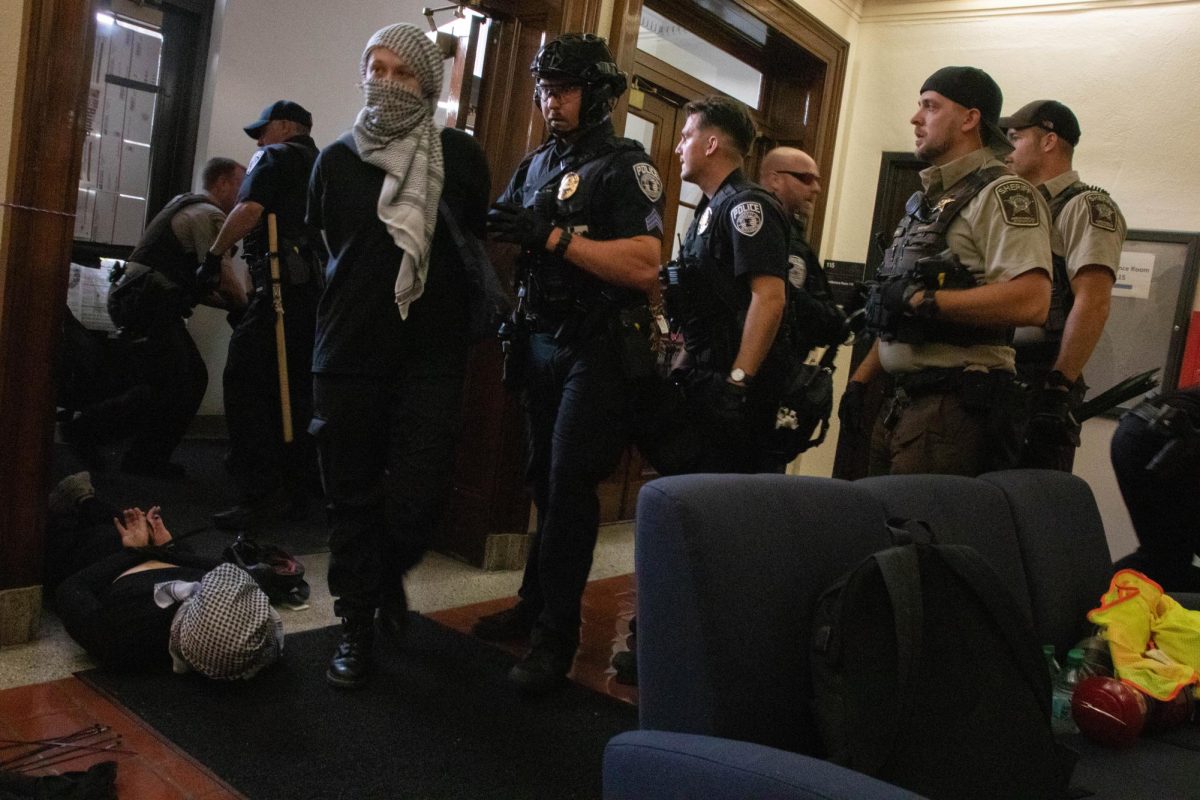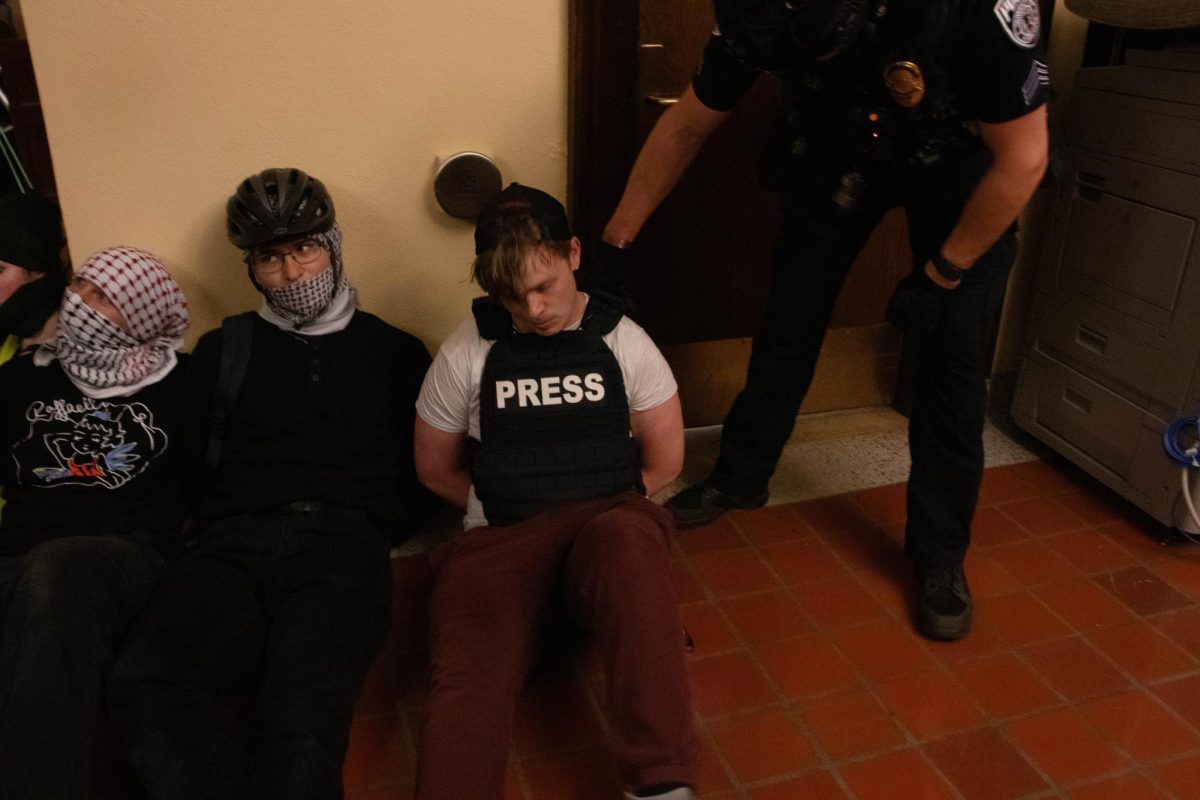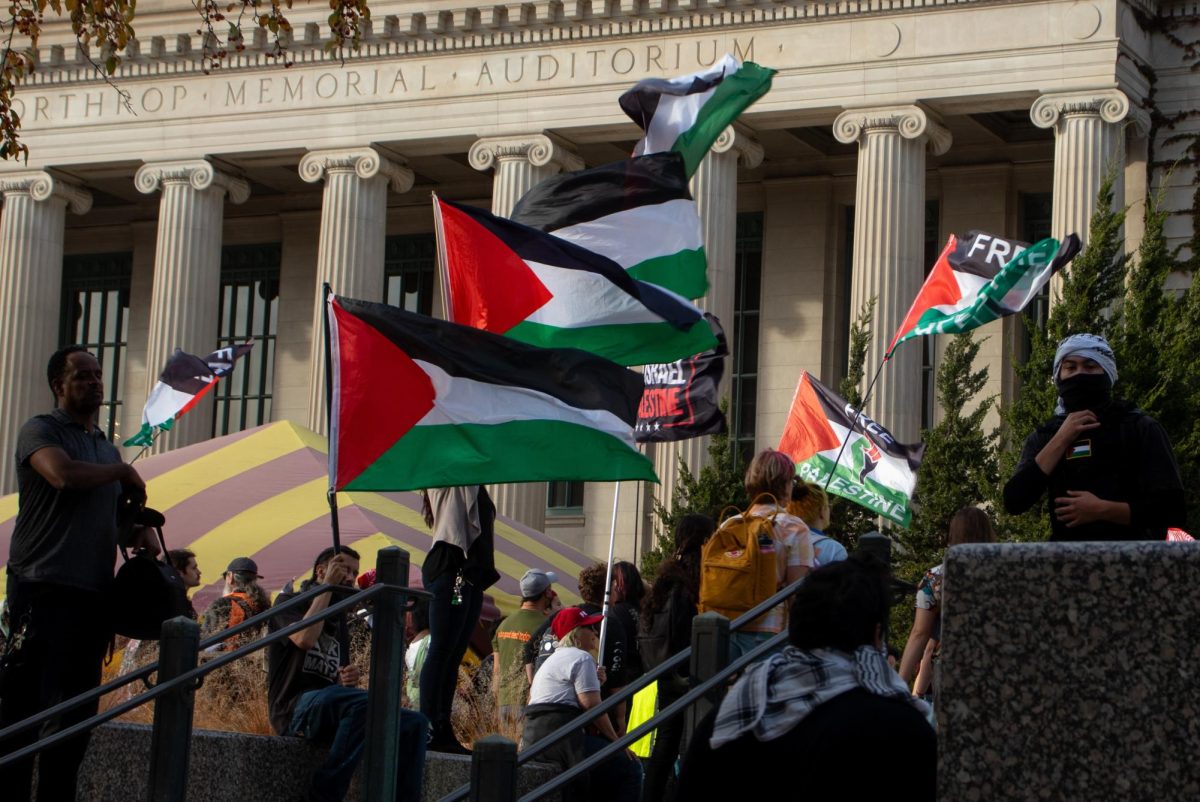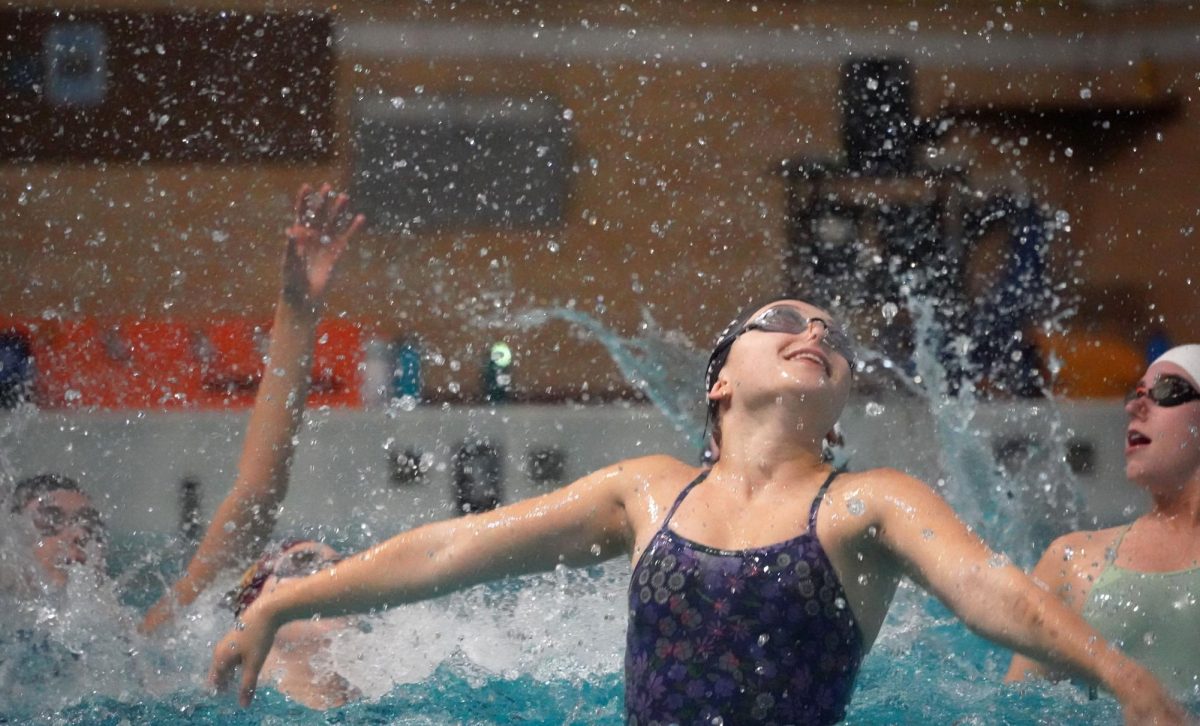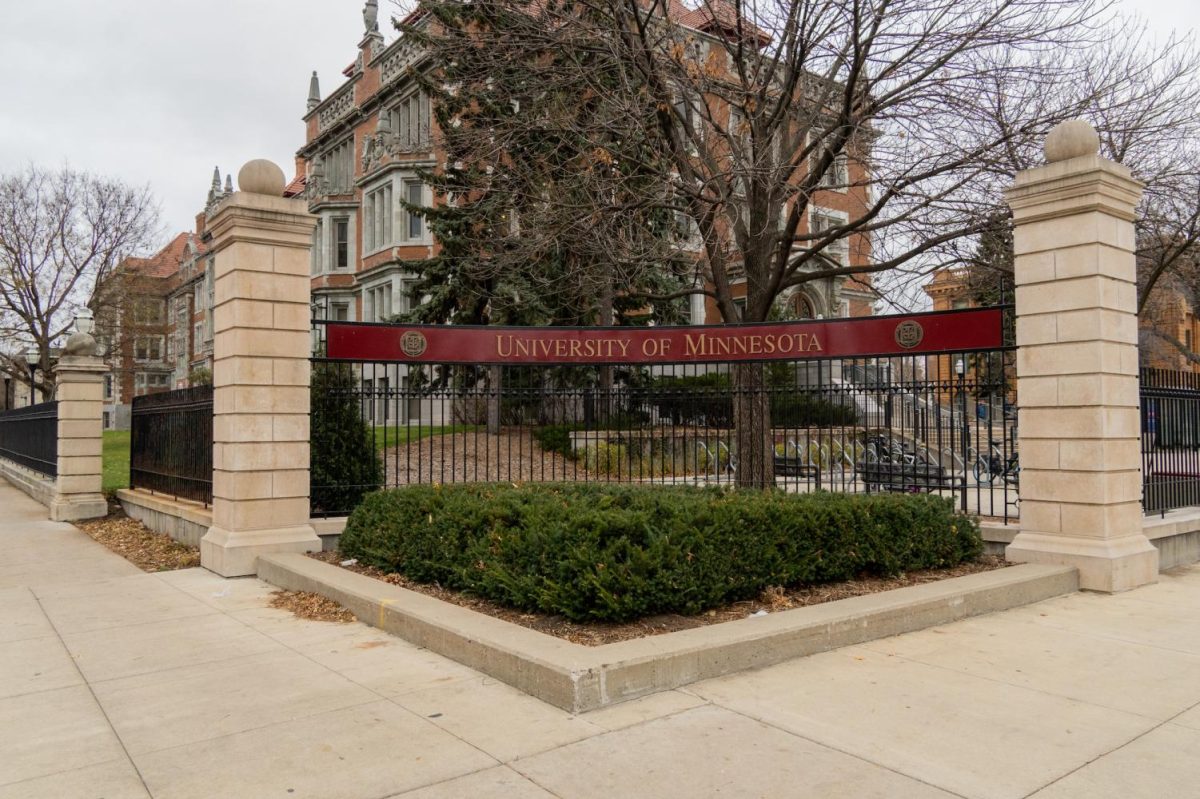Parents of University of Minnesota students on campus July 11 became emotional as they described the danger they believe students face in their daily lives due to a recent uptick in violent crimes on or near campus.
Over 100 University parents packed into Nicholson Hall for a University public safety forum, expressing frustration at a lack of response and action from University and city officials. One event that galvanized parents was the shooting of a 15-year-old in May that occurred in front of a property on University Avenue and had been the site of violent crime.
“I called my son the morning after the shootout,” Melissa Runkel said, tearing up. “I wanted to know if he was safe and discuss what I needed to do … I love these kids. I am so proud of them. And I’m here to speak up for them because they are afraid of retaliation.”
University President Joan Gabel announced on July 12 the formation of a Strategic Safety Advisory Committee to address public safety concerns in off-campus neighborhoods, though the official role of the committee has not been announced. The committee will include University students, family members, staff, faculty and representatives from the University of Minnesota Police Department (UMPD) and the Minneapolis Police Department (MPD).
The committee will begin their work this week, according to a University-wide email sent by Senior Vice President of Finance and Operations Myron Frans Tuesday.
The meeting began with statements from Gabel, Minneapolis Mayor Jacob Frey, UMPD Chief Matt Clark, MPD Interim Chief Amelia Huffman and Senior Vice President of Finance and Frans.
“I know we’re a room full of people who are deeply concerned and care about our University community and our city,” Gabel said during the meeting. “All of us have the same goal of reducing crime, eliminating crime. It’s our number one priority.”
Gabel attended the meeting virtually and left before the Q&A session with parents concluded, which visibly frustrated parents. At the beginning of the meeting, Gabel said she had not been able to attend the meeting in person because of a prior commitment to teach a class out-of-state. Gabel listened to the remainder of the meeting via a recording, according to University Director of Public Relations Jake Ricker.
“And the president of the University making a million dollars a year was able to attend 10 minutes of this meeting,” one parent said, with the crowd erupting in applause and cheers. “I don’t believe that this president or this mayor has a strong commitment to public safety. I hope you prove us all wrong.”
Frans said UMPD is working to hire 10 unarmed community service officers and a recruitment engagement and mentorship officer, and created two police captain positions to support and lead other officers.
Both UMPD and MPD are short a significant number of officers, according to Frey and Clark. Frey said increasing staffing levels is a necessary part of reducing violent crime.
“We have a very aggressive recruiting plan that we’re presently undergoing with four to five classes this year,” Frey said. “We’re doing everything possible to bring on those officers and making sure that they’re paid to do the job that they need to do, which is a hard one … At the same time, I’ll tell you very bluntly that no city in the country is going to be able to recruit their way out of some of the attrition experienced overnight.”
Attendees were given the opportunity to line up to ask a question. After each question was asked, more and more people entered the line to follow up.
Brian Peck was the first parent to speak and announced the formation of a nonprofit called Campus Safety Coalition to address safety issues on college campuses around the nation. He said the board is made up of six University parents whose goal is “to make the University of Minnesota safe once again.”
Peck said the group plans to work with the University and the city to come up with creative solutions for how to decrease crime.
“We’re kind of putting a blueprint together here, a roadmap on how we get involved and can actually get the change, because I think we’re making a lot of progress,” Peck said.
According to Peck, he was invited by Vice President of University Relations Matt Kramer, on behalf of Gabel, to take part in the new Strategic Safety Advisory Committee that will be asked to determine “priority actions” for either the city or University to take to improve safety.
Ahead of publication, Peck was not given further information about the committee, and Frans was unable to give a statement about the committee.
While the meeting was scheduled for one hour, the crowd objected when Frans said they could only take one more question. Some University and city officials, such as the two police chiefs, agreed to stay to hear from others. Many parents stayed for over 30 minutes after the meeting ended.
Many parents echoed similar sentiments to one another about their feelings toward the presence of crime and how it needed to be addressed. Carter Yost, the government and legislative affairs director for the Undergraduate Student Government, said this reflected a lack of diverse voices present at the forum.
The University sent out two emails about the meeting, but Yost said the University should have done more to increase participation of students and others impacted by violent crime on campus.
“Systems and processes at the University facilitated an environment and setup where the only voices [at the forum] represent one specific demographic,” Yost said. “In a public school setting and in a public forum setting, to only ever hear from one type of perspective is just a bad thing. It’s just limiting the strength of our solutions.”
Yost said he was unable to stay after the meeting, which is when several students spoke in front of the remaining attendees.
Yost said he was “disappointed” that the state Legislature’s role in funding public safety measures wasn’t discussed. He mentioned that the Minnesota House of Representatives proposed a $10 million investment in public safety at the University within the higher education omnibus bill during last year’s session, which was eliminated during a compromise with the Senate.
“It is perhaps slightly imprecise to suggest that this is solely a failure of the University or solely a failure of the city, because [Republican] Senators decided that the University of Minnesota didn’t need any more money to help with public safety,” Yost said.
Several University students spoke up about witnessing violent crime on campus after the meeting officially ended. Third-year student Ricky Kanak lives in a fraternity house next door to the Students’ Cooperative property on University Avenue, which was the site of fights and a shooting in May.
Kanak said witnessing violent incidents has been normalized for students like him.
“I work on-campus and off-campus, and at my off-campus job, people come in and are like, ‘oh yeah, there’s just been shots,’” Kanak said. “It’s just become something that happens pretty frequently. It’s been two years of just talking and stuff, no real action.”
Ph.D. student Paida Chikate said she moved from Zimbabwe to Minnesota five years ago to attend the University and has seen the increase in violent crime over the past two years first-hand. She addressed the parents who stayed after the meeting, telling them about a recent incident when she was followed home from the grocery store and had to call the police.
“I chose to come to the U.S. because I value this community and Minnesota is a second home to me,” Chikate said. “So I bear the financial costs of being here. What my soul cannot bear are the lies that I tell my mom when she asks me, ‘How are things going?’ Because she’s 9,000 miles away, I can’t tell her the truth.”
Clarification: A previous version of this article misstated when President Joan Gabel left the meeting. She attended the beginning of the Q&A session and left before it concluded.


